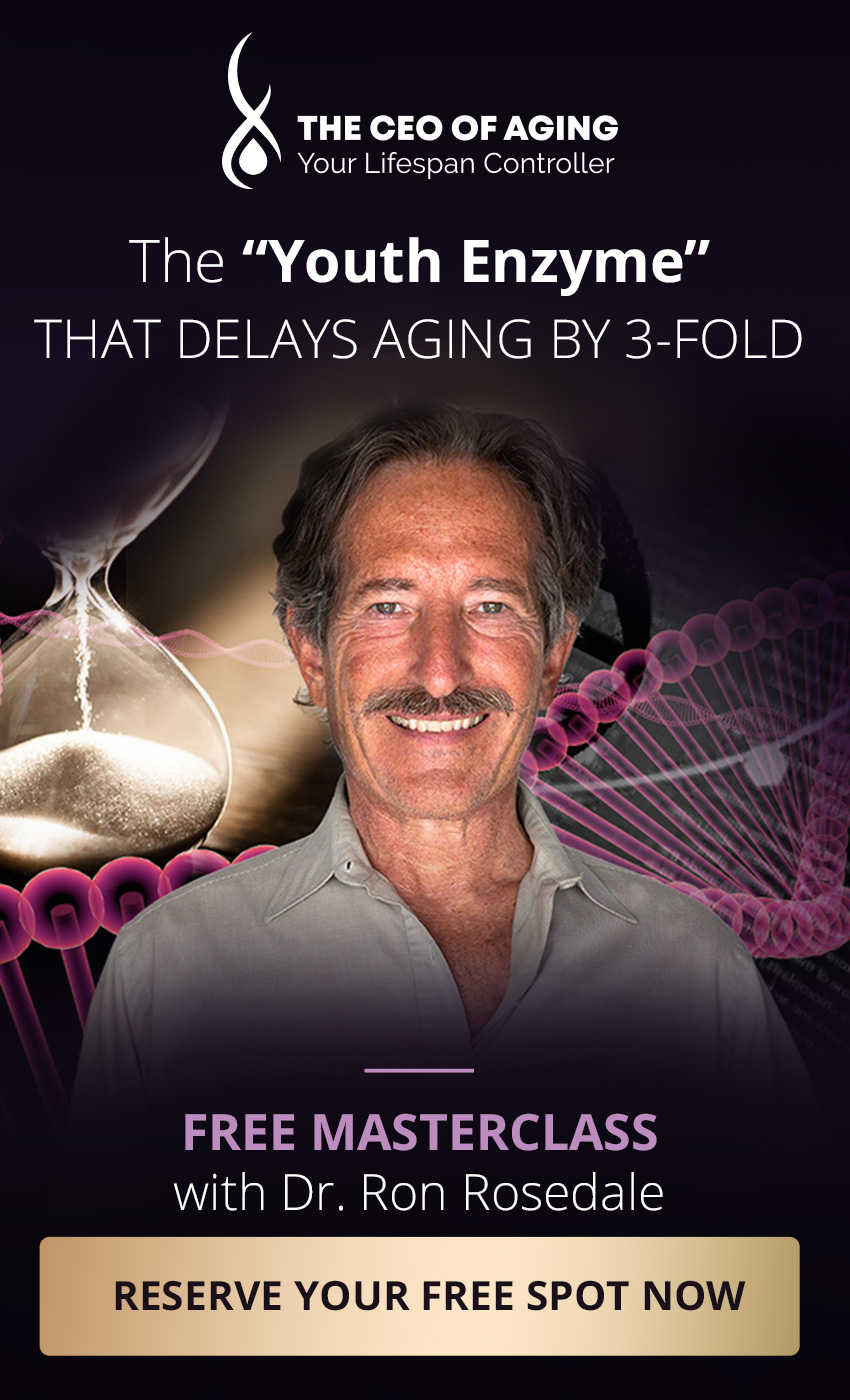Exosome Therapy: Revolutionary Treatment for Immune, Muscle and Joints Problems (The Science)
Home
 Blog
Blog
 Lifestyle
Lifestyle
 Research and Innovations
Research and Innovations
 Exosome Therapy: Revolutionary Treatment for Immune, Muscle and Joints Problems (The Science)
Exosome Therapy: Revolutionary Treatment for Immune, Muscle and Joints Problems (The Science)

Exosome therapy is one of the newer treatments to make a splash in the world of regenerative medicine—only in the last decade or so has it become popular—but according to the research, it has the potential to yield truly impressive results.
In this blog post, we’ll take a closer look at what exosome therapy is, what science has proven it can do, the benefits and risks, and more.
By the end of this page, you’ll know everything you need to know about this revolutionary longevity-boosting treatment.
Exosome Therapy 101
What are Exosomes?
Exosomes are messenger particles released by your cells to facilitate intracellular communication.
You can think of them as internal delivery trucks: they carry proteins and genetic information around your body, delivering them to cells and opening up paths of communication between your various cells. They also help to trigger the release of growth factors that lead to cellular growth, and play a role in stimulating beneficial processes on a cellular level [1].
Exosomes are typically released by cells that are experiencing rapid growth, including B cells, T cells, and stem cells. Exosomes serve to analyze the environment so the growing cells can connect with other pre-existing cells around them.
(Note: Cancer cells also release exosomes to communicate with surrounding cells, which is how they spread.)
Exosomes are often used as a diagnostic tool to detect disease [2]. The high levels of RNA and proteins inherent in exosomes serve as biomarkers that indicate disease, such as cardiovascular conditions, neurodegeneration, or cancer. Testing for and examining these exosomes can increase early identification and facilitate effective treatment of these diseases.
Exosome Therapy: What is It and How Does it Work?
Exosome therapy involves the use of exosomes specially engineered for a specific purpose, such as:
-
Triggering regeneration. Exosomes derived from human stem cells can accelerate tissue regeneration and repair. They have been used for heart attack recovery (repairing damaged cardiac tissue), as well as treating conditions that involve the deterioration of cells in the brain, heart, and liver. It’s also often used to combat hair loss, acne scars, decreased collagen and elastin production, rosacea, and skin damage.
-
Delivery of medications. Exosomes can be engineered to deliver medications or other therapeutic agents, such as genetic material. They are often used to deliver targeted chemotherapy drugs to specific cancer cells, affecting only the cancer cells and leaving the healthy tissue around the tumors undamaged.
-
Gene therapy. Exosomes created to deliver genetic material to cells can help to either modify genes against certain diseases or treat genetic disorders.
-
Treating immune diseases. Exosome can be “programmed” to carry immunomodulating molecules that can either stimulate an underactive immune system or suppress an overactive immune system. They are highly useful for treating autoimmune diseases.
-
Accelerating wound healing. Exosomes can increase the proliferation and migration of skin cells, aiding in the regeneration of damaged cartilage, skin, and bone tissue [3]. They’re used to speed up wound healing, stimulating new blood vessel growth, increasing the remodeling of tissues, and can even decrease inflammation in and around wounds.
Get FREE Access!
We are on a mission to change your life by providing you with curated science-backed health tips, nutrition advice and mouth-watering recipes. Sign up to receive your 3 starter gifts and get exclusive access to new weekly content for FREE:

Free eBook
to boost metabolism

4 Shopping Guides
for every diet

22 Free Recipes
to beat sugar addiction

Subscribe now
Types of Exosomes
There are a few types of exosomes used in exosome therapy. [4]
The first is adipose-derived mesenchymal stem cell (ADMSC) exosomes. These are taken from the specific mesenchymal stem cells naturally found in adipose (fat) tissue in the body of mammals. Yes, ADMSC exosomes can come from either humans or animals—they can have varying degrees of effectiveness based on their origin and their intended use.
The second is mesenchymal stem cell (MSC) exosomes. These come from other parts of your body that also contain stem cells, such as your bone marrow or human umbilical cord blood. Their molecular composition will differ slightly from ADMSC exosomes, and may have other uses.
For example, ADMSC exosomes are particularly useful for decreasing inflammation, modulating the immune system, and increasing blood vessel formation. Other MSC exosomes may contain other properties and function better in other areas of the body.
How Does Exosome Therapy Differ from Stem Cell Therapy?
As you’ve seen above, exosomes utilized in exosome therapy are typically derived from stem cells. In that sense, exosome and stem cell therapy are fairly similar.
But there are a few differences between them. [5]
Stem cell therapy focuses on manipulating stem cells (derived from bone marrow, adipose tissue, umbilical cords, and embryos) so they become a specific type of cell, based on what your body needs. Donor stem cells are injected into the body, where they trigger the repair or regeneration process that helps your body to create new, healthy, functional cells over time.
Exosome therapy, on the other hand, uses only the exosomes from those mesenchymal stem cells. They contain up to 300% more growth factors than adult stem cells, and contain vital proteins, signaling cytokines, messenger- and micro-RNA, and lipids that help your cells to function more effectively. They increase the intracellular communication in your body, essentially stimulating the body to making the repairs on its own while merely providing the necessary building blocks and facilitating cell-to-cell communication.
Exosome therapy is much more targeted than stem cell therapy. In cases of medical conditions like osteoarthritis or genetic disorders, they can provide genetic information extracted from “younger” and healthier cells, and use that information to help your body make its own repairs and improve itself. They combat the decrease in intracellular communication brought about by degenerative and chronic diseases, and accelerate your body’s regenerative processes.
Exosome Therapy to Combat Aging
As mentioned above, exosome therapy is used to treat skin and hair conditions—including hair loss, atopic dermatitis, rosacea, wrinkles, skin lines, burns, scars, and the sagging that comes from a decrease in collagen and elastin production (a natural side effect of aging).
Research [6] has demonstrated that exosome therapy can be highly effective at treating skin conditions in a number of ways:
-
It can increase the formation of blood vessels, leading to increased blood flow (delivery of oxygen and nutrients) to the skin. This, in turn, leads to better skin cell health and a better cellular turnover rate.
-
It can increase the production of collagen. Collagen is the protein that keeps your skin fresh, tight, and youthful, but it tends to be produced less and less as we age. By increasing collagen production, exosome therapy can stop the effects of skin aging at the source.
-
It can regulate inflammation. Inflammation can stop the skin from receiving critical oxygen and nutrients, and can accelerate the deterioration of healthy skin cells.
-
It can trigger skin regeneration. Not only does exosome therapy increase collagen production, blood flow, and modulate inflammation, but it can increase cellular proliferation and communication.
A great deal of research remains to be done, but experts remain hopeful and positive that exosome therapy will continue to demonstrate its effectiveness as a treatment for combatting conditions of aging—from skin conditions to neurodegeneration to cardiovascular conditions.
Is Exosome Therapy for You?
For the time being, exosome therapy is fairly limited—typically used only to treat more serious medical conditions, injuries, and diseases.
However, more and more dermatologists and skin clinics are offering this cutting-edge treatment to help combat the most visible signs of aging.
If you’re interested in learning more, visit your doctor and get their advice on whether exosome therapy can benefit you. Advances are being made every year, with amazing healing and regenerative benefits unlocked every day. It may be worth looking into!
Resources:
[1] https://www.dvcstem.com/post/exosomes#:~:text=What%20is%20Exosome%20Therapy%3F,specific%20cells%20in%20the%20body.
[2] https://www.ncbi.nlm.nih.gov/pmc/articles/PMC8100822/
[3] https://bioinst.com/en/exosome-therapy/
[4] https://bioinst.com/en/exosome-therapy/
[5] https://www.nature.com/articles/s44222-023-00064-2
[6] https://biomaterialsres.biomedcentral.com/articles/10.1186/s40824-021-00224-8

We created ZONIA because we believe that everyone deserves to be empowered with the education and tools to be healthy and happy. Zonia's original videos and personalized transformation programs by our health & wellness experts will help you achieve this mission. Click on the button below to get started today:















